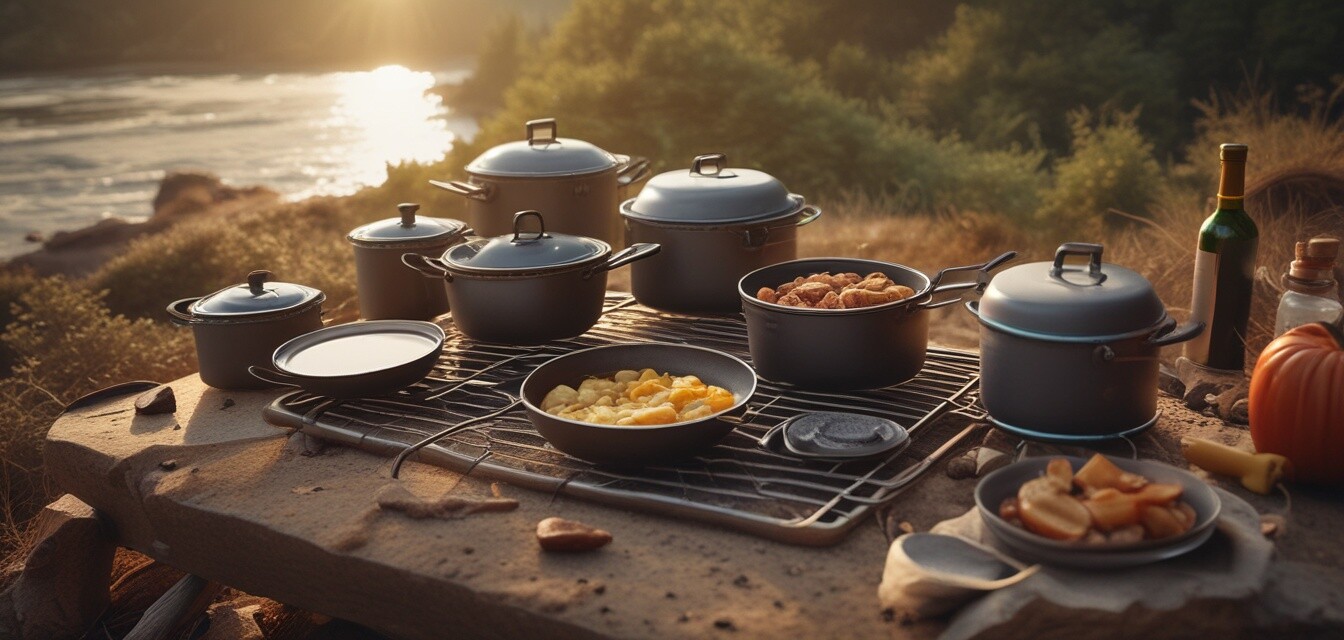
How to Choose the Best Outdoor Cooking Gear for Emergencies
Key Takeaways
- Reliable outdoor cooking gear is crucial for food safety during emergencies.
- Consider portability when selecting cooking equipment.
- Look for multi-functional gear to save space and weight.
- Ensure the availability of fuel sources compatible with your cooking gear.
- Prioritize easy-to-clean options to maintain hygiene in emergencies.
In outdoor emergencies, being able to cook safely and efficiently can make a world of difference. Whether facing a natural disaster or embarking on a camping adventure, understanding how to choose the right outdoor cooking gear is essential for ensuring you can provide sustenance. This guide will take you through the key aspects to consider when selecting cooking gear that meets your needs during emergencies.
Factors to consider when choosing outdoor cooking gear
When looking for outdoor cooking gear, it's important to consider various factors that will impact your cooking experience and food safety. Below are some crucial aspects to consider:
| Factor | Description |
|---|---|
| Portability | Gear should be lightweight and easy to carry, especially if you need to evacuate or move quickly. |
| Size | Choose equipment that fits your available space while still allowing for adequate cooking. |
| Fuel Source | Identify which fuel sources your gear requires and ensure you have adequate supply during emergencies. |
| Durability | Your cooking gear should withstand harsh outdoor conditions and regular usage. |
| Ease of Cleaning | Look for gear that's easy to clean to maintain hygiene and prevent foodborne illnesses. |
Types of outdoor cooking gear
Understanding the different types of cooking gear can help you make an informed decision. The following list outlines some popular options:
- Portable Stoves: Ideal for quick cooking with minimal setup.
- Camping Grill: Great for larger meals and offers a traditional grilling experience.
- Cookware Sets: Including pots and pans suitable for various cooking methods.
- Utensils: Essential tools like spatulas, tongs, and knives for food prep.
- Food Storage Containers: To keep ingredients fresh and prevent contamination.
Key features to look for
Choosing the right outdoor cooking gear involves looking for specific features that will enhance your cooking experience during emergencies. Here are key features to keep in mind:
- Multi-functionality: Gear that serves multiple purposes can save space and improve efficiency.
- Temperature Control: Equipment that allows for temperature regulation to avoid overcooking or burning food.
- Wind Resistance: Stoves or grills that can withstand windy conditions improve cooking consistency.
- Compact Design: The ability to pack down for minimal storage when not in use.
- Safety Features: Gear with built-in safety mechanisms to prevent accidents.
Maintaining your outdoor cooking gear
After selecting the right gear, maintaining it is vital to ensure longevity and proper function:
- Clean all components after each use to prevent residue build-up.
- Store in a dry place to avoid moisture-related damage.
- Inspect regularly for wear and tear, making repairs when necessary.
- Keep your fuel supplies in a safe and organized manner.
- Follow manufacturer guidelines for upkeep.
Pros
- Provides essential cooking capabilities in emergencies.
- Enhances food safety and preparation efficiency.
- Encourages community and bonding over shared meals.
Cons
- May require additional resources such as fuel.
- Setup can be complicated for some users.
- Potentially higher initial investment compared to non-portable options.
Conclusion
Choosing the right outdoor cooking gear for emergencies is an investment in your safety and well-being. By considering portability, the type of equipment, and essential features, you can ensure that you’re prepared for any situation. For more information on outdoor equipment and what you may need for your adventures, check out our comprehensive survival gear section or learn more about outdoor tips and resources to enhance all of your outdoor experiences.
Related Resources
Continue exploring more tips on outdoor cooking and safety: